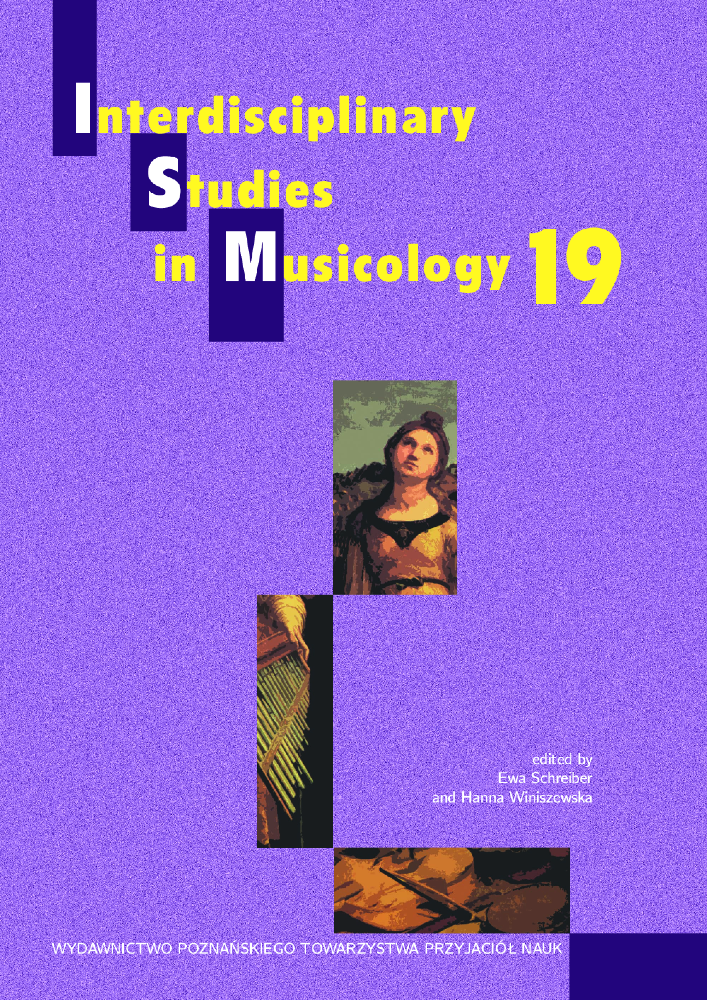Abstrakt
The article is composed of two parts. In the first I discuss Lawrence Zbikowski’s Foundations of Musical Grammar, published by Oxford University Press in 2017, which is one of the major musicological works inspired by the latest achievements in cognitive science. Musical grammar, sometimes called cognitive musical grammar by the author, is based mainly on two concepts: an analogy (the mapping of systematic structural relationships between a source domain and a target domain), and a dynamic process (a coherent sequence of phenomena that is distributed over time and typified by parametric modulation or change). The second part of the article is my attempt to apply Zbikowski’s theory to a piece of music. As a musical example I have chosen the second movement of Compartment 2, Car 7 for vibraphone, violin, viola and cello by Paweł Szymański. At the end I conclude that the composer created an analogy between music and a dynamic process known to us from everyday life ─ a journey by train, seen from a passenger’s perspective.
Bibliografia
Cichy, D. (2007). ‘Koncert fortepianowy’ Pawła Szymańskiego na tle filozoficznych idei postmodernizmu. [Paweł Szymański’s ‘Piano concerto’ in the context of the philosophical ideas of postmodernism.]
In A. Jarzębska, J. Paja-Stach (Eds.). Idee modernizmu i postmodernizmu w poetyce kompozytorskiej i w refleksji o muzyce [The ideas of modernism and postmodernism in composers’ poetics and reflection on music] (pp. 277–296). Kraków: Musica Iagellonica.
Erhardt, L. (2006). Szymański w EMI [Szymański in EMI]. Ruch Muzyczny, 24, 40.
Kostka, V. (2011). Wartości muzyki Pawła Szymańskiego [The Values of Paweł Szymański’s Music]. In Krytyka muzyczna, 5, 1–11. Retrieved from: www.demusica.pl/cmsimple/images/file/krytyka_5_kostka1.pdf
Kostka, V. (2018). Muzyka Pawła Szymańskiego w świetle poetyki intertekstualnej postmodernizmu [Paweł Szymański’s Music in the Light of Intertextual Poetics of Postmodernism]. Kraków:
Musica Iagellonica.
Lupa, K. (2006). [without any title]. In [booklet to CD] Paweł Szymański. Zaratustra (pp. 1–5). Warszawa: EMI (0946 3 71876 2 3).
Szwarcman, D. (2006). Kompozytor surkonwencjonalny [The Surconventional Composer]. Polityka, 47, 13–16.
Zbikowski, L. (2017). Foundations of Musical Grammar. New York: Oxford University Press

